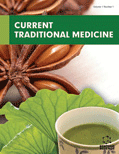
Abstract
Background: In recent times, herbal medicines have experienced an expansion in both developing and developed countries due to their natural origin and low incidence of adverse effects. A systematic review was performed to gather information regarding herbal plants used to treat diabetes mellitus.
Objective: The aim of this article was to review evidence from preclinical and clinical trials and the proposed mechanism of herbal drugs in diabetes mellitus.
Methods: A literature survey was carried out mainly focused on scientific papers published in recent years. The search strategy involved interrelated keywords, like “Diabetes mellitus,” “Herbs,” “Hyperglycaemia,” and other uniterms. Electronic databases used were Scopus, Web of Science, PubMed, and Elsevier.
Results: Twenty studies, including preclinical and clinical trials, were selected for evaluating the mechanism of the anti-hyperglycaemic effect of herbal drugs in diabetes mellitus.
Conclusion: Through clinical and preclinical research as well as an analysis of the mechanism of action of herbs, the current review provides preliminary evidence for possible anti-diabetic benefits of herbal medicines.
Keywords: Diabetes mellitus, diabetic complications, preclinical study, clinical study, hyperglycemia, polyherbal formulation, Tinospora cordifolia.
[http://dx.doi.org/10.1038/nrendo.2016.53] [PMID: 27080137]
[http://dx.doi.org/10.7257/1053-816X.2016.36.1.27] [PMID: 27093761]
[http://dx.doi.org/10.1186/s40537-019-0175-6]
[PMID: 20042775]
[PMID: 29845781]
[http://dx.doi.org/10.3390/diabetology2020004]
[http://dx.doi.org/10.3390/ijms21176275] [PMID: 32872570]
[http://dx.doi.org/10.1016/S0377-1237(09)80056-7] [PMID: 27408191]
[http://dx.doi.org/10.4103/2225-4110.126174] [PMID: 24860734]
[http://dx.doi.org/10.3389/fphar.2021.752926] [PMID: 34690784]
[http://dx.doi.org/10.1186/s12937-015-0098-9] [PMID: 26475130]
[http://dx.doi.org/10.1002/ptr.5684] [PMID: 27406313]
[http://dx.doi.org/10.1007/s12291-014-0436-2] [PMID: 25883426]
[PMID: 33995939]
[http://dx.doi.org/10.1017/S0007114509992054] [PMID: 19825210]
[http://dx.doi.org/10.1089/acm.2012.0063] [PMID: 23581458]
[http://dx.doi.org/10.5897/JDE2019.0136]
[http://dx.doi.org/10.1093/ajcn/86.1.124] [PMID: 17616771]
[http://dx.doi.org/10.21474/IJAR01/14459]
[http://dx.doi.org/10.1248/bpb.28.937] [PMID: 15863912]
[http://dx.doi.org/10.2217/14750708.4.4.457]
[http://dx.doi.org/10.1016/j.cbi.2008.09.034] [PMID: 18983991]
[http://dx.doi.org/10.1080/10496470902787451]
[PMID: 21454169]
[http://dx.doi.org/10.1016/S1995-7645(11)60025-4]
[http://dx.doi.org/10.5530/pc.2012.1.4]
[http://dx.doi.org/10.5455/jice.20130530123748]
[http://dx.doi.org/10.1186/1472-6882-13-37] [PMID: 23414307]
[http://dx.doi.org/10.5455/jice.20140818050741] [PMID: 26401364]
[http://dx.doi.org/10.4103/0974-8520.182752] [PMID: 27313423]
[http://dx.doi.org/10.1186/s12906-015-0899-6] [PMID: 26490765]
[PMID: 28348974]
[http://dx.doi.org/10.1016/j.jtcme.2018.10.001] [PMID: 31453133]
[http://dx.doi.org/10.1515/jbcpp-2016-0193] [PMID: 28888089]
[http://dx.doi.org/10.18203/2319-2003.ijbcp20191577]
[http://dx.doi.org/10.4314/tjpr.v19i2.10]
[http://dx.doi.org/10.1111/j.1472-8206.2009.00700.x] [PMID: 19709327]
[PMID: 22557337]
[PMID: 21675032]
[http://dx.doi.org/10.1016/j.ctim.2013.07.003] [PMID: 24050578]
[http://dx.doi.org/10.1016/j.ctim.2013.12.017] [PMID: 24559810]
[PMID: 26665406]
[PMID: 27774415]
[PMID: 11868855]
[http://dx.doi.org/10.1007/s11655-007-9005-3] [PMID: 18219452]
[PMID: 15521566]
[http://dx.doi.org/10.1016/j.jep.2010.12.045] [PMID: 21211558]
[http://dx.doi.org/10.1016/j.ejps.2010.09.016] [PMID: 20933082]
[http://dx.doi.org/10.3390/biology9090252] [PMID: 32872226]
[http://dx.doi.org/10.4103/0257-7941.107344] [PMID: 23661861]
[http://dx.doi.org/10.1016/j.biopha.2017.05.082] [PMID: 28551550]
[http://dx.doi.org/10.1016/j.jep.2020.113216] [PMID: 32763420]
[http://dx.doi.org/10.4103/0975-7406.168035] [PMID: 26681895]
[http://dx.doi.org/10.19082/1832] [PMID: 26955456]
 16
16 2
2




























